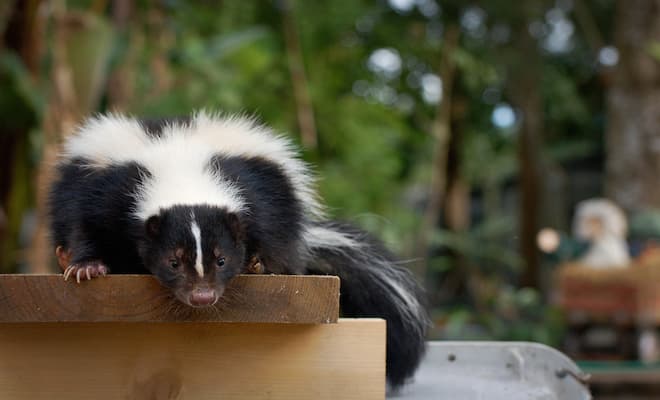When it comes to baby skunks and the possibility of them having rabies, it’s important to understand the facts. While it is true that skunks, including baby ones, can carry rabies and other viruses, it is crucial to distinguish between carrying the virus and actually being rabid. Let’s delve into the topic of baby skunks and rabies, shedding light on the signs of rabid skunks and the necessary precautions to ensure safety.
How Skunks are Affected
Rabies is a disease that affects the nervous system of an animal, and it can be found in skunks, including babies. However, it is worth noting that the chances of a baby skunk being rabid are relatively low due to its fragility and young age. In order for an animal to be rabid, the virus needs to pass through the bloodstream, which is less likely in baby skunks. It typically takes a few weeks for the symptoms of rabies to appear in skunks, making it a relatively slow process.
Skunk Rabies Signs
While signs of rabies in baby skunks can be challenging to detect, it’s essential to be aware of the signs associated with rabid adult skunks. Early symptoms of rabies in skunks may include lethargy and vomiting, which can manifest within the first few days of contracting the virus. As the disease progresses, skunks may display increased aggression and confusion. If you encounter a skunk, particularly one showing signs of aggression, it’s crucial to ensure the safety of yourself, your pets, and your children by avoiding any close contact.
How Pros Remove Skunks
The first step in skunk removal is a thorough inspection of your property. Technicians will search for skunk burrows and identify potential entry points and vulnerabilities. Based on their findings, they will provide you with recommendations to address the issue.
Since skunks often burrow beneath existing structures, technicians will install a one-way door at the base of the structure to allow the skunk to exit but prevent re-entry. To further deter skunks from digging underneath, a trench will be dug around the perimeter, and an L-shaped steel mesh will be placed in the trench.
One-Way Door Removal
One-Way Door Removal: Once the skunk has vacated the area, the technician will remove the one-way door and seal the main entry point with strong steel mesh to prevent future skunk encounters.
If you happen to find a skunk on your property and need assistance in removing it safely, it is recommended to hire professional and licensed pest control technicians who specialize in skunk removal. These technicians follow a guaranteed process to ensure the effective and humane removal of skunks from your premises. To learn more about our removal process, contact our customer service representatives from Skunk Control at

